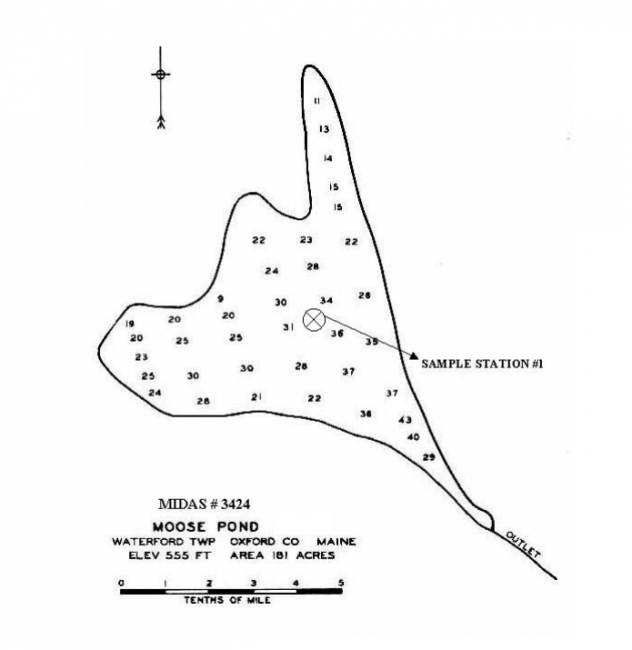

Little Moose Pond in Waterford has quiet coves and rocky ledges that provide a variety of different habitats for water fowl and wildlife viewing. It’s a great place to paddle along a pristine shore. There are very few camps and residential dwellings.
Water transparency is excellent and general water quality is suitable for both warmwater and coldwater fish. The pond thermally stratifies during the summer months, but areas below 25 to 30 feet are deficient in oxygen. Despite this limitation there is suitable water quality to support a coldwater fishery. Interspecific competition and predation by warmwater fish significantly compromise efforts to manage for brook trout. Brook trout fisheries are sustained through an annual maintenance stocking program. Abundant white perch are above average in size quality and are commonly caught between 9 and 14 inches long. Largemouth bass were established as a result of an unauthorized introduction.
13 percent of soils in the watershed are type A soils. Type A soils tend to be well drained sands, loams, and gravels. When vegetation is removed and the soil is exposed they can be susceptible to erosion. Because they are often coarse with ample pore space, there is low runoff potential and water will not usually pool on them. These soils can be good places to site leach fields or infiltrate stormwater from a home or residence.
15 percent of soils in the watershed are type B soils. B soils have moderate infiltration rates and fine to moderate texture and soil size. They are usually made up silts and loams. Although not as well drained as A soils, they can also be good places to site leach fields and infiltrate stormwater.
45 percent of soils in the watershed are type C soils. C soils have low infiltration rates and typically have a layer that impedes the movement of water. These soils are made of sands, clays, and loams and are one of the most common soil types in western Maine.
1 percent of soils in the watershed are type D soils. D soils have a high runoff potential and very low infiltration rates. Soils with a high water table, clay or other impervious layer near the surface are typically D soils. These soils are often associated with wetlands.
12 percent of soils in the watershed are type C/D soils. C/D soils are a mix of these two soil types. They have fairly high runoff potential and low infiltration rates and often pool water.
The remaining 14 percent of the watershed is taken up by the pond.